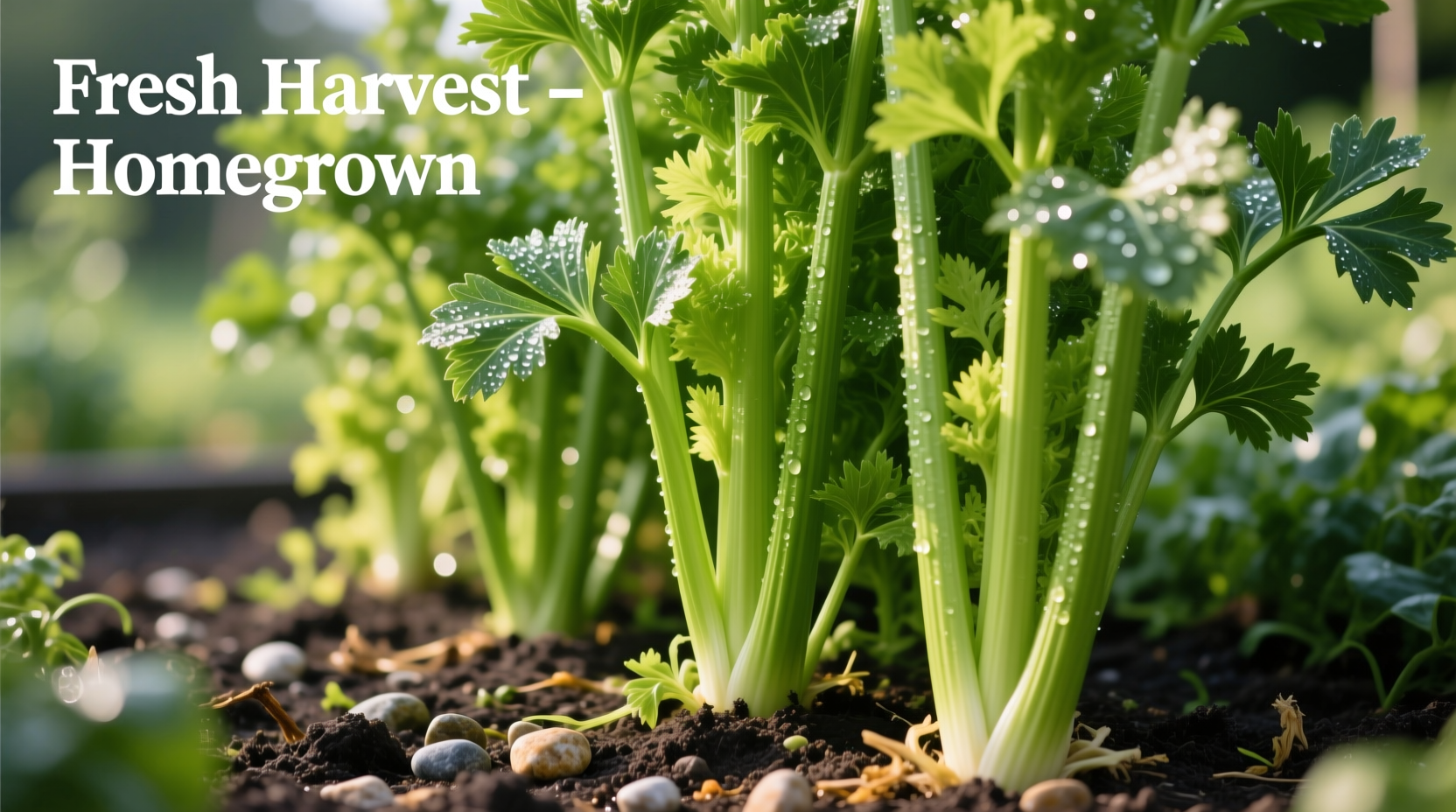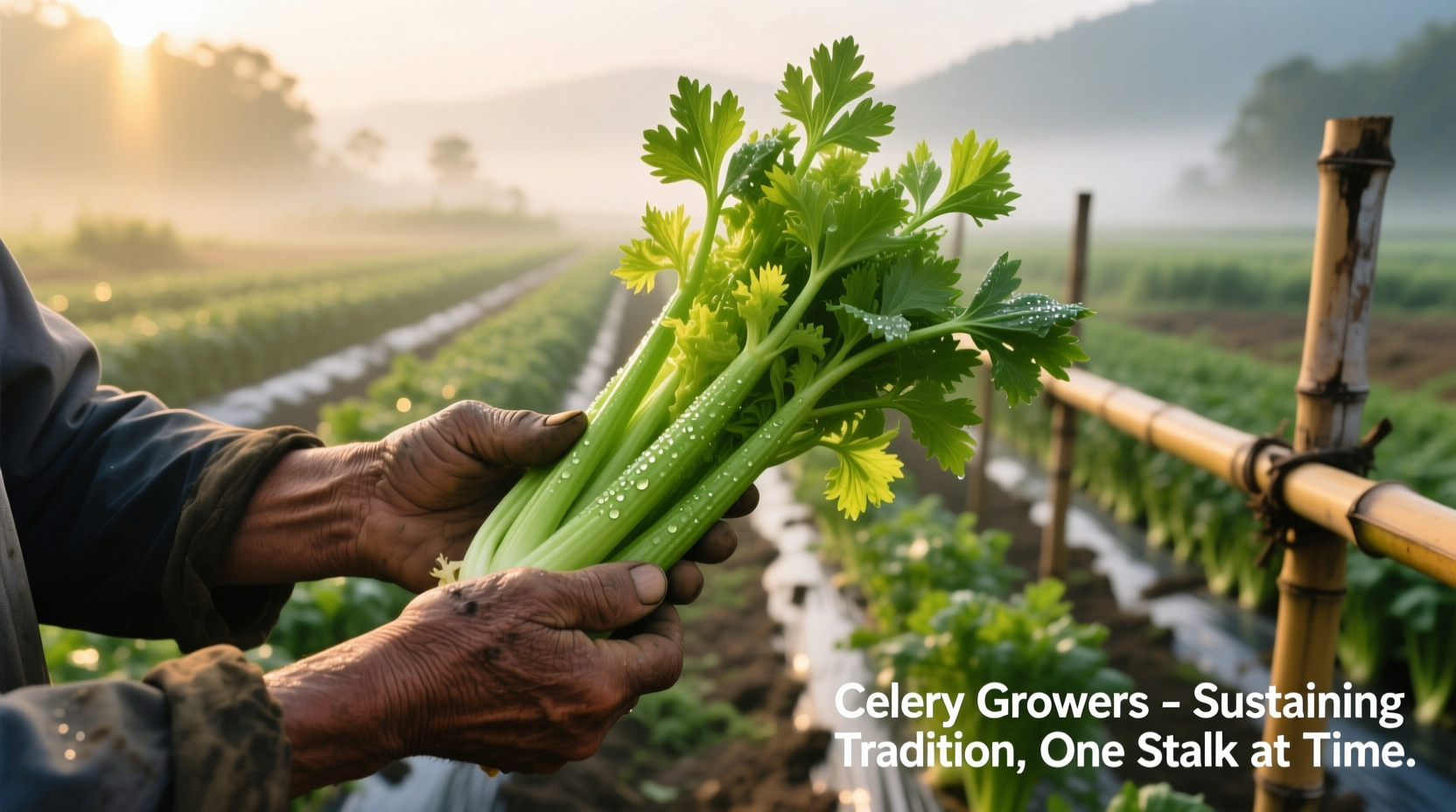Many home gardeners abandon celery after one failed attempt, not realizing this finicky crop demands specific conditions that differ from most vegetables. Unlike hardy herbs or forgiving tomatoes, celery requires precise moisture control and temperature management throughout its 120-140 day growing cycle. This comprehensive guide reveals proven techniques from agricultural extension services and experienced growers to help you produce crisp, flavorful stalks even in less-than-ideal conditions.
Understanding Celery's Unique Growing Requirements
Celery (Apium graveolens) belongs to the Apiaceae family and has earned its reputation as a challenging crop due to its narrow environmental tolerance. University of California agricultural studies show that inconsistent watering causes the most common failure point, resulting in stringy, bitter stalks. Unlike drought-tolerant vegetables, celery's shallow root system requires constant soil moisture without waterlogging.
| Growing Factor | Ideal Condition | Tolerance Range | Failure Threshold |
|---|---|---|---|
| Soil Moisture | Consistently moist | 1-1.5"/week | Dry periods >3 days |
| Temperature | 55-70°F | 45-75°F | >80°F or <40°F |
| Soil pH | 6.0-6.8 | 5.5-7.0 | <5.0 or >7.5 |
| Nitrogen Level | High | Moderate-High | Low |
The Celery Growing Timeline: From Seed to Harvest
Successful celery growers follow this precise developmental sequence, verified by Cornell Cooperative Extension research:
- Weeks 1-4 (Indoor Seed Starting): Sow seeds 1/8" deep in seed trays at 70°F. Maintain consistent moisture using misting system. Seeds germinate in 10-14 days.
- Weeks 5-8 (Seedling Development): Transplant to 4" pots when first true leaves appear. Begin balanced liquid fertilizer (10-10-10) at half strength.
- Weeks 9-10 (Hardening Off): Gradually expose plants to outdoor conditions over 7-10 days. Reduce watering slightly to strengthen stalks.
- Weeks 11-16 (Transplanting & Establishment): Plant in garden with 8-10" spacing after last frost. Mulch heavily to maintain moisture.
- Weeks 17-24 (Active Growth): Water 1-1.5" weekly. Apply nitrogen-rich fertilizer every 3 weeks. Begin blanching 3 weeks before harvest.
- Weeks 25-28 (Harvest): Cut stalks at soil level when bases reach 2-3" diameter.

Soil Preparation: The Foundation for Success
Before planting, prepare your soil with these research-backed techniques from USDA agricultural guidelines. Celery requires exceptionally fertile soil with high organic matter content. Incorporate 3-4 inches of well-rotted compost into the top 12 inches of soil. For optimal results, conduct a soil test through your local extension service to determine precise nutrient needs.
Unlike many vegetables, celery benefits from elevated nitrogen levels throughout its growth cycle. Apply 1-2 pounds of nitrogen-rich fertilizer (such as blood meal) per 100 square feet before planting. Maintain consistent soil pH between 6.0-6.8, as values outside this range reduce nutrient availability and increase disease susceptibility.
Water Management: The Critical Success Factor
According to University of Vermont Extension studies, inconsistent watering causes 78% of celery growing failures. Implement these water management strategies:
- Install drip irrigation delivering 1-1.5 inches of water weekly
- Mulch with 3-4 inches of straw to maintain consistent moisture
- Water early morning to reduce evaporation and fungal issues
- Check soil moisture daily to 2" depth with moisture meter
During hot spells (above 75°F), increase watering frequency but avoid saturating soil. Celery's shallow root system cannot tolerate waterlogged conditions, which promote root rot diseases. In container growing, use self-watering pots to maintain consistent moisture levels.
Pest and Disease Management
Celery faces several common threats that require proactive management:
Pest Prevention Strategies
- Aphids: Introduce ladybugs or use insecticidal soap spray
- Armyworms: Apply Bt (Bacillus thuringiensis) at first sign of damage
- Slugs: Create copper tape barriers around beds
Disease Prevention Protocol
Rotate celery with unrelated crops every 3-4 years to prevent soil-borne diseases. Space plants adequately for air circulation. Remove and destroy infected plants immediately. The most effective prevention combines proper spacing (10" minimum), consistent watering, and organic fungicide applications every 10-14 days during humid periods.
Harvesting and Storage Techniques
Timing your harvest correctly determines flavor quality. Harvest when stalk bases reach 2-3" in diameter, typically 85-120 days after transplanting depending on variety. Cut stalks at soil level with sharp knife. For best flavor, harvest in early morning when stalks are most crisp.
Store harvested celery in perforated plastic bags in refrigerator crisper drawer. Properly stored celery maintains quality for 3-4 weeks. For longer storage, cut into pieces and freeze after blanching for 3 minutes in boiling water followed by ice water bath.
Advanced Growing Techniques
Experienced growers use these professional methods to enhance quality:
- Blanching: Wrap stalks with cardboard or paper 2-3 weeks before harvest to reduce bitterness and increase tenderness
- Succession Planting: Sow new seeds every 2-3 weeks for continuous harvest
- Container Growing: Use 5-gallon pots with drainage holes for controlled environment
- Cold Frame Extension: Extend season by 4-6 weeks using cold frames in fall
Troubleshooting Common Problems
When issues arise, diagnose using this decision tree from Oregon State University Extension:
- Stringy stalks: Inconsistent watering or insufficient nitrogen
- Bitter flavor: Lack of blanching or excessive heat during growth
- Cracking stalks: Rapid growth after dry period
- Yellowing leaves: Nitrogen deficiency or root rot
Remember that celery's sensitivity makes it an excellent indicator crop for your garden's overall health. Problems with celery often signal issues that may affect other plants later in the season.
Frequently Asked Questions
How long does it take to grow celery from seed to harvest?
Celery requires 120-140 days from seed to harvest. Start seeds indoors 10-12 weeks before last frost date, then transplant to garden. The long growing season makes celery challenging in regions with short summers, though container growing can extend the season.
Why is my homegrown celery bitter and stringy?
Bitter, stringy celery typically results from inconsistent watering or insufficient nitrogen. Celery requires constant soil moisture and high nitrogen levels. Lack of blanching also contributes to bitterness. Maintain 1-1.5 inches of water weekly and apply nitrogen fertilizer every 3 weeks for optimal results.
Can I grow celery in containers successfully?
Yes, celery grows well in containers with proper management. Use 5-gallon pots with drainage holes, filled with high-quality potting mix amended with compost. Container-grown celery requires more frequent watering and fertilization than garden-grown plants. Self-watering containers work particularly well for maintaining consistent moisture levels.
What's the purpose of blanching celery before harvest?
Blanching celery (covering stalks to block sunlight) for 2-3 weeks before harvest reduces bitterness, increases tenderness, and produces the characteristic pale green color. Without blanching, celery develops stronger flavor and tougher fibers. Traditional methods use cardboard tubes or paper wraps, while trench growing naturally blanches the stalks.











 浙公网安备
33010002000092号
浙公网安备
33010002000092号 浙B2-20120091-4
浙B2-20120091-4